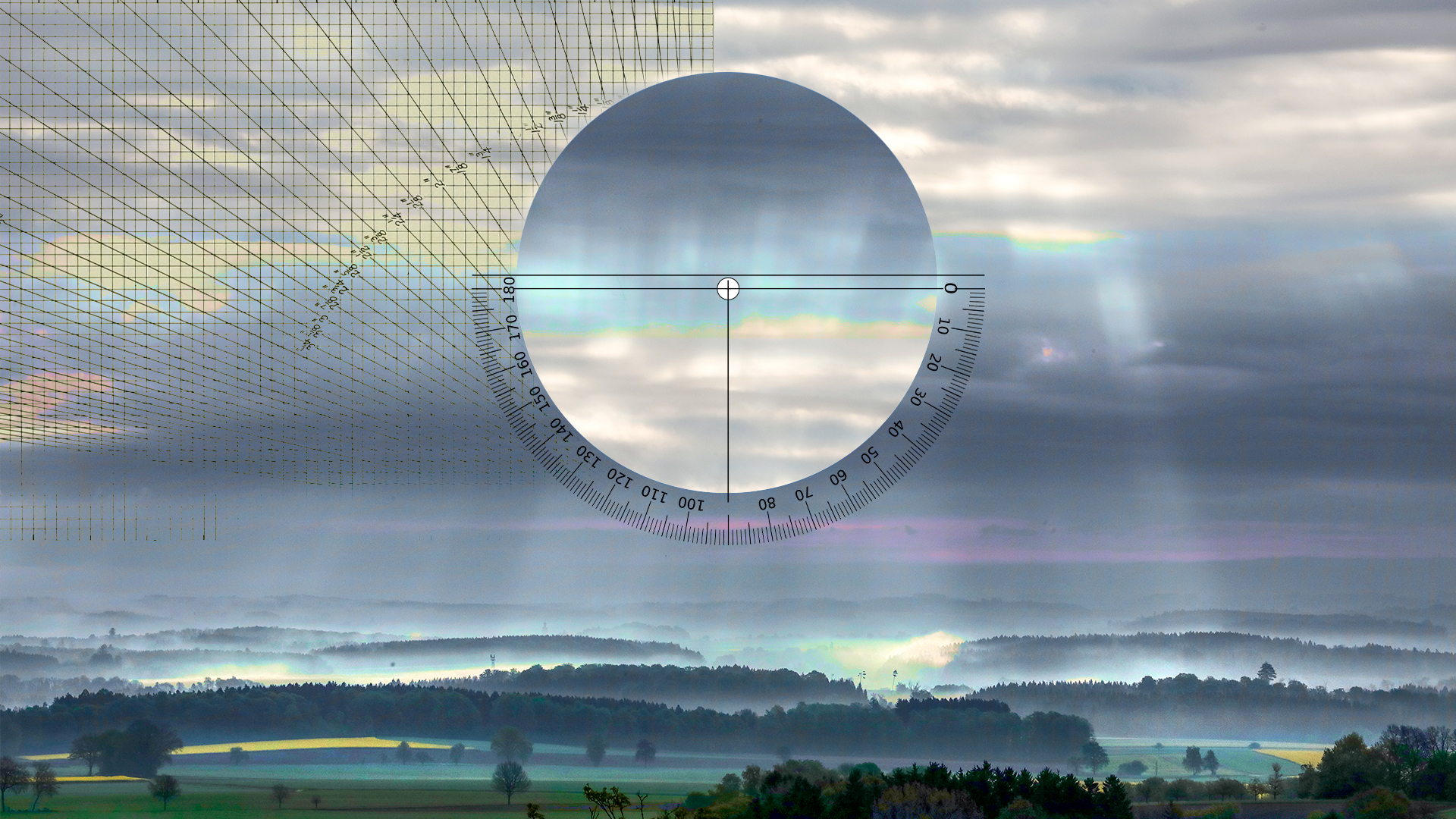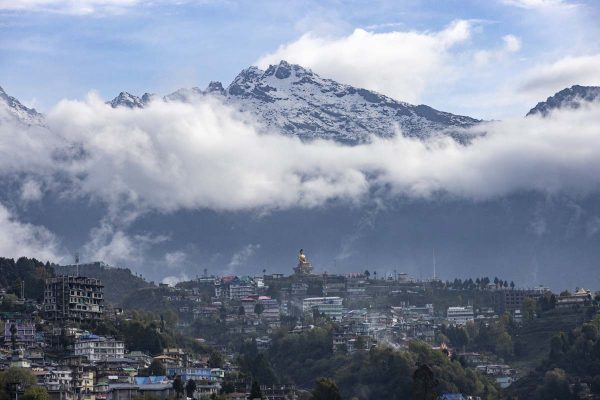
Teona Tsintsadze/Getty Images
‘Sunscreen for the earth’ could curb climate change. It could also destroy us
When the Mount Pinatubo volcano erupted in the Philippines in 1991, it spewed a massive cloud of ash and sulfur into the air. The sulfate particles then scattered into the Earth’s stratosphere where, for the next two years, they reflected sunlight back into space. The particles cooled the planet by about 0.9 degrees Fahrenheit.
In recent years, scientists desperate to stop global warming have looked back at this natural event and wondered: Could people recreate similar effects to help reverse rapidly rising global temperatures?
Enter stratospheric aerosol injection, the process of releasing tiny reflective particles of sulfur dioxide into the stratosphere that reflect sunlight back into space in order to cool off the planet. The concept mimics the natural activity of volcanoes like Mount Pinatubo. But it is driven by humans.
Proponents of stratospheric aerosol injection, including start-ups and researchers investigating and experimenting with the process, call it “sunscreen for the earth” and argue that we can create a layer of protection to shield us from the hot rays of the sun. It is one of a growing variety of Earth-cooling techniques that fall under the conceptual umbrella of “solar geoengineering.” Other proposed solar geoengineering techniques range from creating light-reflecting clouds to deploying giant mirrors in space. In 2020, Xiulin Ruan, a professor of mechanical engineering at Purdue University in Indiana, unveiled a “whiter than white” specialized paint, designed for rooftops and roads, that can bounce 95% of the sun’s rays back into deep space, cooling the buildings beneath it.
But a growing group of scientists and academics are afraid that solar geoengineering is an all-too-welcome distraction from our obligations to reduce carbon emissions and a flawed scientific concept to boot. They say processes like these could throw Earth into deeper chaos by cooling the world unevenly and wreaking havoc on our climate systems. Plus, solar geoengineering could lock us into long-term reliance on such techniques, creating new dependencies and potential consequences.
“There’s a sense of really deep desperation and urgency among scientists who are reading climate science and see how dire the situation is,” said Lili Fuhr, the director of the Center for International Environmental Law’s Climate & Energy Program. She explained that despair can lead scientists to scramble around for an idea — any idea — that might stop global heating quickly.
“I don’t think that desperation turns a bad idea into a good idea. The only good idea is that we need to get out of fossil fuels. Anything else doesn’t help us,” said Fuhr.
Despite the concerns that scientists like Fuhr share, solar geoengineering has some uniquely powerful advocates. Bill Gates has backed a Harvard University proposal to shoot light-reflecting aerosols into the sky above the Arctic Circle in Sweden, a project that was scrapped after local indigenous Saami people raised objections. In February, billionaire philanthropist George Soros gave a nod to the idea of creating more clouds above the ice caps to cool the poles by blocking sunlight. “Human interference has destroyed a previously stable system and human ingenuity, both local and international, will be needed to restore it,” he said in a speech at the 2023 Munich Security conference. And Facebook co-founder Dustin Moskovitz has provided $900,000 in funding for 15 solar geoengineering modeling projects.
These projects have the look of a quick, relatively cheap, technology-led solution to global heating that doesn’t involve restructuring society around sustainability and renewable energy. It would mean that society could, in theory, have its cake and eat it too: We could keep spewing carbon into the atmosphere while protecting the Earth from greenhouse gas effects.
But processes like this could require humans to continue shooting chemicals into the stratosphere for centuries. Fuhr explained that this could put us on a dangerous trajectory: We wouldn’t be able to stop or even slow down the deployment of these chemicals without facing a rapid, sudden — and potentially catastrophic — heating event. “There would be a shock effect that humans and ecosystems wouldn’t be able to adapt to,” she said. Scientists like Fuhr estimate that an event like this would cause the Earth to heat up so rapidly that we’d risk destroying life on the only planet we can safely live on.
If we want to avoid this, Fuhr said, we’d need “centuries of an international collaborative political regime, doing this in a benign way, for the benefit of all.”
“I can’t think that anyone actually believes that is possible. We have regime changes all the time — look at the country I’m in right now,” she told me, speaking from Washington, D.C.
Nevertheless, the U.S. government has shown increased interest in such initiatives. In June, the White House announced a federal plan to research the concept of solar geoengineering more deeply, with the president’s Office of Science and Technology Policy leading an effort to set risk management standards and transparency guidelines for any publicly-funded solar geoengineering research in the U.S. The move could be the first step toward greater federal engagement with solar geoengineering research efforts.
The European Union has been more cautious: It has warned against using large-scale disruptive geoengineering technology without a proper assessment of the risks. In June, the bloc called for global talks on the subject and said that the risks of interfering with the climate were “unacceptable.”
“Nobody should be conducting experiments alone with our shared planet,” said European Union climate policy chief, Frans Timmermans, at a news conference. But the EU is also looking at setting rules and boundaries for outdoor geoengineering experiments, an indication that at least some officials are warming to the idea.
In 2021, a collective of scientists and industry professionals signed a “solar geoengineering non-use agreement,” demanding no public funding, no outdoor experiments, no patents, and no support in international institutions for the practice. In other words, they called for a complete shutdown of any experimentation or exploration of solar geoengineering. The scientists and academics said the idea was simply too dangerous and that it would be impossible to test the effects of solar geoengineering on the Earth’s climate without actually releasing the chemicals on a global scale.
“You’re literally talking about intervening with the atmosphere, which protects the only semblance of life that we know in an otherwise desolate universe. Like, I don’t even know what to say to these people. It’s extraordinary,” said Noah Herfort, the co-director of Climate Vanguard, a youth think tank that has been warning about the risks of geoengineering since 2022.
At some point, artificially spewing massive amounts of sulfur dioxide into the stratosphere to see its effects on the Earth stops being a test. We cannot fully predict the outcome without actually doing it, Fuhr explained. “And we just happen to have one planet,” she said.
The story you just read is a small piece of a complex and an ever-changing storyline that Coda covers relentlessly and with singular focus. But we can’t do it without your help. Show your support for journalism that stays on the story by becoming a member today. Coda Story is a 501(c)3 U.S. non-profit. Your contribution to Coda Story is tax deductible.
















